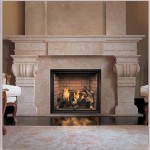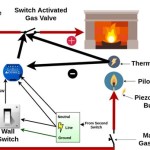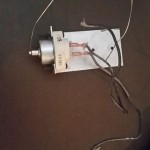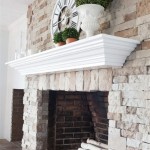Masonry Outdoor Fireplace: A Timeless Addition to Your Outdoor Living Space
A masonry outdoor fireplace represents a significant investment in enhancing the ambiance and functionality of any outdoor living area. Unlike prefabricated options, masonry fireplaces are custom-built structures, crafted from durable materials like brick, stone, or concrete blocks. This construction method allows for unparalleled design flexibility, enabling homeowners to create a focal point that perfectly complements their existing landscape and architectural style. The enduring appeal of a masonry fireplace stems from its ability to seamlessly blend aesthetic beauty with practical functionality, providing warmth, a gathering space, and a touch of rustic elegance to any outdoor setting.
The construction of a masonry outdoor fireplace is a complex undertaking that typically requires the expertise of skilled masons and contractors. The process involves careful planning, meticulous execution, and adherence to local building codes. A well-built masonry fireplace can last for decades, becoming a cherished feature of the home and a source of enjoyment for generations to come. By understanding the benefits, design considerations, construction process, and maintenance requirements associated with masonry fireplaces, homeowners can make informed decisions and ensure that their investment provides lasting value and enjoyment.
The Enduring Benefits of a Masonry Fireplace
Choosing a masonry outdoor fireplace offers several distinct advantages over other outdoor heating options. These benefits extend beyond mere aesthetics, impacting the longevity, functionality, and overall value of the outdoor living space.
Durability and Longevity: Masonry fireplaces are renowned for their exceptional durability. Constructed from materials designed to withstand extreme temperatures and weather conditions, they are significantly more resistant to wear and tear than prefabricated metal fireplaces. Brick, stone, and concrete blocks are inherently fire-resistant and capable of enduring years of exposure to the elements without significant degradation. This inherent durability translates to a longer lifespan, making a masonry fireplace a sustainable and cost-effective investment in the long run. Regular maintenance, such as cleaning and occasional mortar repair, can further extend the lifespan of a masonry fireplace, ensuring its continued functionality and aesthetic appeal for decades to come.
Aesthetic Appeal and Customization: One of the most significant advantages of a masonry fireplace is its superior aesthetic appeal. Unlike mass-produced metal fireplaces, masonry fireplaces can be completely customized to complement the architectural style of the home and the surrounding landscape. Homeowners have virtually unlimited options in terms of materials, design, and size. They can choose from a wide range of bricks, stones, and concrete blocks, each offering a unique texture, color, and character. Furthermore, the design of the fireplace can be tailored to incorporate specific features, such as built-in seating, storage for firewood, or decorative accents. This level of customization allows homeowners to create a truly unique and personalized outdoor living space that reflects their individual taste and preferences.
Increased Property Value: A well-designed and constructed masonry outdoor fireplace can significantly increase the value of a property. It is considered a desirable amenity that enhances the overall appeal and functionality of the outdoor living space. Potential homebuyers often view outdoor fireplaces as a valuable investment, as they provide a comfortable and inviting space for entertaining guests, relaxing with family, and enjoying the outdoors. The addition of a masonry fireplace can differentiate a property from others in the market, making it more attractive to prospective buyers and potentially increasing its resale value. Furthermore, the enduring quality and timeless appeal of a masonry fireplace ensure that it will remain a valuable asset for years to come.
Design Considerations for a Masonry Outdoor Fireplace
Planning a masonry outdoor fireplace requires careful consideration of several factors to ensure that the finished product is both aesthetically pleasing and functional. These considerations encompass location, size, style, and necessary safety features.
Location and Orientation: The location of the fireplace is crucial for both aesthetic and functional reasons. Consider factors such as prevailing winds, proximity to structures, and the overall layout of the outdoor living space. Placing the fireplace in an area that is sheltered from strong winds will help to prevent smoke from blowing back into the seating area. It is also important to maintain a safe distance from the house and any other flammable structures. The orientation of the fireplace should be such that it maximizes its visual impact and creates a natural gathering space for seating. The location should also allow for easy access to firewood and provide adequate ventilation to ensure proper combustion.
Size and Scale: The size of the fireplace should be proportionate to the size of the outdoor living space and the overall scale of the house. A fireplace that is too large can overwhelm the space, while one that is too small may not provide adequate heat or visual impact. Consider the intended use of the fireplace when determining its size. A smaller fireplace may be sufficient for intimate gatherings, while a larger fireplace may be necessary for entertaining larger groups. The height of the chimney should also be carefully considered to ensure proper draft and prevent smoke from blowing back into the seating area. Local building codes may specify minimum chimney height requirements.
Style and Materials: The style of the fireplace should complement the architectural style of the house and the overall aesthetic of the outdoor living space. Choose materials that are durable, weather-resistant, and aesthetically pleasing. Brick, stone, and concrete blocks are all excellent choices for masonry fireplaces. Consider the color, texture, and pattern of the materials to create a visually appealing design. You can also incorporate decorative elements, such as arches, mantels, and corbels, to enhance the fireplace's style and character. Consider the use of natural stone to blend seamlessly with the surrounding landscape or opt for a more contemporary design with clean lines and sleek materials. The possibilities are virtually endless, allowing homeowners to create a fireplace that perfectly reflects their personal style and preferences.
The Construction Process and Essential Safety Measures
The construction of a masonry outdoor fireplace is a multi-step process that requires the expertise of skilled masons and contractors. It is essential to understand the basic steps involved and to prioritize safety throughout the construction process.
Foundation and Base Construction: The foundation is the most critical element of any masonry structure. It must be strong and stable enough to support the weight of the fireplace and to resist the effects of soil movement and frost heave. The foundation typically consists of a concrete slab that is reinforced with steel rebar. The size and depth of the foundation will depend on the size and weight of the fireplace and the soil conditions. Once the foundation is in place, the base of the fireplace can be constructed. The base provides a level surface for the firebox and chimney and helps to elevate the fire pit from the ground. The base is typically constructed of concrete blocks or bricks and should be properly reinforced to prevent cracking or settling.
Firebox and Chimney Construction: The firebox is the heart of the fireplace and is where the fire burns. It must be constructed of fire-resistant materials that can withstand high temperatures. Firebrick is the most common material used for fireboxes. The firebox should be designed to provide adequate ventilation and to promote efficient combustion. The chimney is responsible for venting smoke and exhaust gases away from the seating area. It must be properly sized and constructed to ensure proper draft. The chimney typically consists of clay flue liners that are surrounded by brick or stone. The chimney should extend above the roofline to prevent smoke from blowing back into the house.
Safety Considerations and Building Codes: Throughout the entire construction process, safety should be the top priority. Ensure that all workers are properly trained and equipped with appropriate safety gear, such as hard hats, safety glasses, and gloves. Follow all local building codes and regulations to ensure that the fireplace is built safely and legally. Obtain all necessary permits before beginning construction. Maintain a safe distance from flammable materials and structures. Install a spark arrestor on top of the chimney to prevent sparks from escaping and potentially causing a fire. Regularly inspect the fireplace for cracks or damage and make any necessary repairs promptly. By adhering to these safety precautions, homeowners can enjoy their masonry outdoor fireplace with peace of mind.

Outdoor Fireplace Kits Stonewood S Cape Cod Ma Nh Ct

Outdoor Fireplaces Round Grove S

Stonetutorials Living Stone Masonry

Outdoor Fireplace Kits Masonry Stone

Outdoor Combo Fireplace And Oven Round Grove S

Outdoor Fireplace Kits Masonry Industries Inc

How To Build An Outdoor Fireplace

Outdoor Stone Paver Firepits Fireplaces Installer Minneapolis St Paul

Outdoor Fireplace With Bench Seating W Tips From A Professional Mason

Stone Age Manufacturing 18 Inch Veranda Diy Outdoor Fireplace Kit
Related Posts








